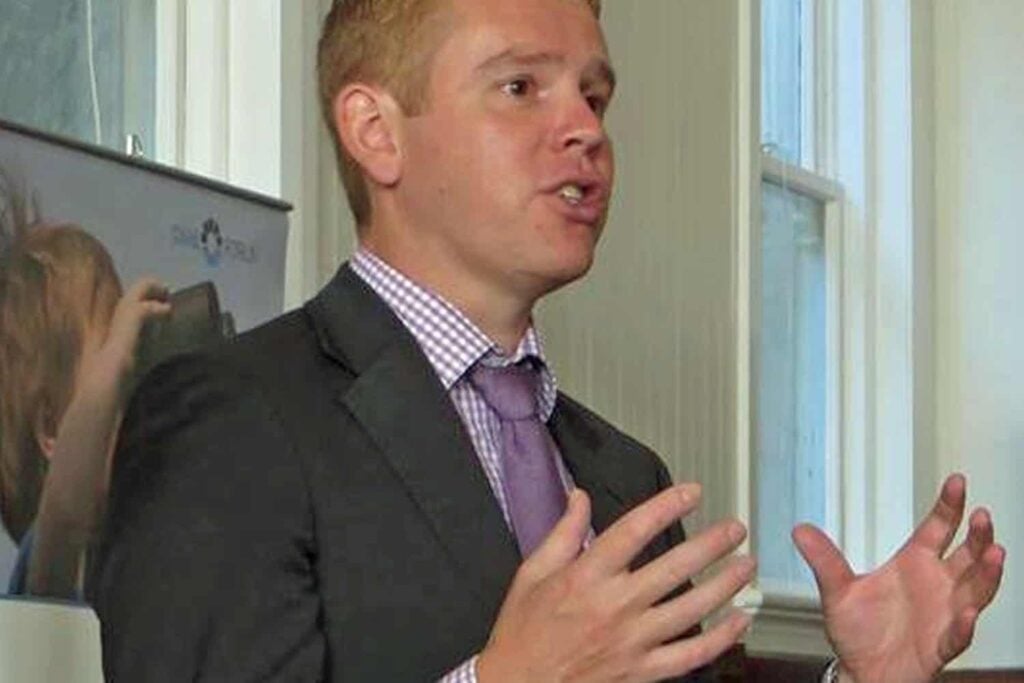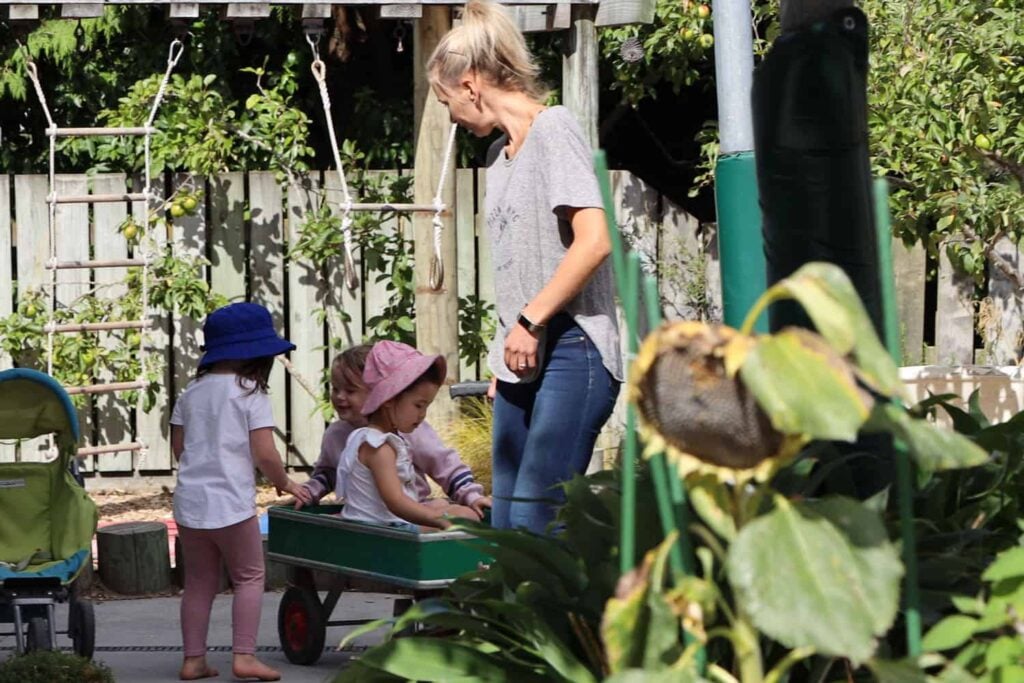Issues Created by the Removal of the 100% Qualified Target and Funding Band.
Date: 6 October 2016.
Overview.
In 2010/2011 following the reduction in target and funding for qualified and certificated teachers from 100% to 80% services experienced significant losses in annual income and demand by employers for qualified teachers dropped. We saw redundancies. We saw teachers forced to accept lower pay and no pay increases if they wanted to stay working in the sector.
Today there is a risk of certificated teacher funding being withdrawn altogether. Some indications of this are:
- A report commissioned by the Ministry of Education warns of the risk of fiscal pressure on the Government from increasing wages / salaries in the sector. The certificated teacher funding exposes the Government to this risk.i
- The Education Minister’s personal advisory group for the review of education funding systems lacked sufficient representation of early childhood interests and leaders with actual expertise in ECE. The funding proposals reflect a near absence of understanding of the special characteristics of the ECE sector and its needs. The certificated teacher funding and the gains made in uplifting the quality of staffing over the last decade are not presented as being politically important any longer.
- The Minister of Education does not seem to like that funding goes towards ECE services having more certificated teachers working with children, stating in a paper presented to cabinet that the funding has “effectively tied staff to the floor hampering change and innovation. ii
We know from past experience that Education Ministers can bring in changes as they wish with little or no consultation and before the sector has time to really grasp what is happening. For example when the 100% teacher target and funding was dropped and when the maximum centre/group licence size was changed from 50 to 150 children to reduce pressure on government to increase funding to ECE services.
Our survey with 1000 responses reveals deep concerns that even worse outcomes would occur this time round.
Removal of the funding, and along with it the rules regarding use of funding for teacher wages and ratios, would unwind what has been achieved in reaching the level of 80% or more certified teachers employed at most teacher-led ECE services around the country. This would occur because ECE services have reacted to the monetary incentive as businessesiII and without it employer behaviours are expected to revert to what they were before. We would also likely see public perception shift back to viewing ECE as basic child minding only and not of education and learning value.
The Ministry of Education’s requirement must remain for ECE providers to show they are paying teachers at least at the levels set by the ministry according to 994 out of 1000 people or 99% of responses. The Ministry of Education put the attestation requirement in place for a purpose because it did not trust all ECE providers of using funding as intended, and the respondents to this survey agree. Should the requirement be taken away providers may choose to pocket or use education funding personally for purposes other than employing and remunerating certificated teachers appropriately. It is believed that redundancies will occur, wages will fall, teachers will walk away from the profession and there will be a significant skills and knowledge loss from the sector. Fewer qualified staff will put time and money into meeting the practising teacher criteria because teacher certification would no longer make a difference to their employment.
If there were no requirement for ECE providers to attest to paying teachers at least at the wage levels set by the ministry, there would still be a need for some form of wage protection for teachers according to 964 out of 1000 people or 96% of responses.
A second requirement that teachers be counted as part of the regulated adult-child ratio only when they are with children must also be retained according to 847 out of 1000 people or 85% of responses. It is believed that it would be a bad decision to allow teachers engaged in tasks such as administration and cooking who are not working with children to count as part of the minimum regulated adult-child ratio ‘on the floor’. It would put children’s safety at risk owing to lower levels of supervision and children’s learning and emotional wellbeing at risk because of less teacher contact. It would also make the working environment more stressful for teachers left with more children than they can cope with and unfairly expose them to blame and accountability when accidents happen and children are hurt.
Below is more detail on:
1. What the certificated teacher funding incentive is and how it works;
2. The survey that was carried out;
3. People’s responses to the three survey questions.
This paper concludes with a general discussion and recommendations that arise from the survey findings.
Report on Removal of the 100% ECE Qualified Target and Funding
By Sarah Alexander.
October 8, 2016.
How the certificated teacher funding incentive works
The Government recognises ECE as having some very special benefits which is why it provides funding to the sector for education and care, to support work place participation and parents return to work while their child is still young and for longer term social and economic benefits.iv
The employment of staff qualified in early childhood education and care is an internationally recognised predicator of early childhood education programme quality. The Ministry of Education explains that teacher certification is also important for ECE to benefit children:
“Teacher registration [certification] ensures the quality of teaching staff because it shows that newly graduated teachers have completed suitable teacher education programmes and are supervised and supported through an advice and guidance programme. Gaining full registration and maintaining practice certificates assures currency of professional knowledge and practice. For ECE to provide the most benefits [to children], it must be of high quality.”v
The way the funding works is that services get paid more if they fall into a higher funding band for the proportion of certificated teachers employed and working “on the floor” within the regulated adult to child ratio. The funding bands are: 80%+ certificated teachers, 50 – 79% certificated teachers, 25 – 49% certificated teachers and 0 – 24%.
The funding acts to top-up the standard 20- and 30-hour subsidies by around $3 and more per child per hour depending on a service’s percentage of certificated teachers and child age (if under or over 2 years of age).
In return for the funding, ECE providers must attest to paying all teachers wages/salaries at least at the minimum level set by the Ministry of Education. For example, teachers who have a 3-year teaching degree should be paid at least $44,817 or $21.54 an hour, or $46,137 ($22.18 an hour) for a 4-year teaching degree.
ECE providers have discretion over how much of the funding is used to pay teachers as long as the attestation requirement is met. They can keep what they do not use on wages or use it to pay for other things such as staff professional development.
The survey
An online survey was run in Sept 2016 that in under a week received the maximum number of responses set of 1000. One response per person was counted within the maximum response limit – a few respondents attempted to submit multiple responses.
The survey was publicised on various early childhood social networks and people self-opted into responding. This method of public surveying provided a cross-section of views of different interests in early childhood education: namely employees (71.3%, 713), owners and operators of services (7.5%, 75), student teachers (4.8%, 48), in-home educator private contractors (1%), and other concerned people (15.4%, 154) which included parents and grandparents, early childhood teachers between jobs or on leave, tertiary educators, retired teachers, primary school teachers, secondary teachers, school principals , community centre board members, relief/casual teachers and many other individuals who listed their jobs as bank manager, GP, research fellow, Ministry of Education contractor, and school guidance counsellor, etc.
Most respondents were associated with a private early childhood service or services (61%) and one quarter with community-based or publicly owned services (25%). Fourteen percent had no current association with any particular type of early childhood service.
The questions asked were:
1. Is it okay if the Ministry of Education drops the current wage/salary attestation requirement for ECE services?
2. Is it okay for teachers counted within the minimum legal adult to child ratios to not have to stay and work with the children and be able to leave ‘the floor’ to do other work?
3. Do you agree or disagree with the following statement: “There is a need for early childhood teachers who are not kindergarten teachers and are not covered by a collective agreement to have some form of minimum wage protection that is above the NZ adult minimum wage of $15.25 an hour.”
Peoples’ responses
Is it okay if the Ministry of Education drops the current wage/salary attestation requirement for ECE services?
The requirement must stay according to nearly all but six of the 1000 responses received. The respondents agreed with why the Ministry of Education requires wage and salary attestation, and that is that it ensures employer demand for staff who are qualified and certificated while making sure that the funding goes towards meeting the higher costs of employing certificated teachers.
From the perspective of teachers the requirement also acts as a kind of safeguard (although it has its limitations) against wage exploitation, as explained in the following comment made in response to the question:
“There are some teachers I know who are being paid less than their current wage/salary attestation requirement for ECE services owing to the current loopholes. I can imagine that more teachers will get the same treatment when the employers are ‘allowed’ to do it”.
The rates set by the ministry are thought to be very much at the low end and could be higher as certificated ECE teachers are mostly degree qualified professionals. The rates were considered to be more suited for a teacher starting out rather than a teacher with experience and years of work behind him or her.
Of the six responses supporting dropping the attestation requirement, three gave reasons which were: their centre missed out on funding by having unqualified teachers, the requirement was cumbersome and few services were audited, and it would help services financially not to have to pay teachers at least at the rates set by the ministry.
While there would be positive benefits for ECE providers and the Government of reducing compliance and wage/ funding costs, there would also be negative outcomes.
Added comments by respondents suggest concern over the impact it would have on people’s career choices, for example:
“Without this kind of wage protection, why would we bother to run up a student loan, to gain a degree which may give us knowledge, but not earn us enough of an income to live on?”.
“I have just spent $20k+ on my bachelor’s degree, which I would have never undertaken if I thought I could neither pay this loan back and earn a living wage – so now my own children will live in poverty?”
It was believed that teachers currently working in ECE would leave in response to employers offering lower wages / salaries, for example:
“As a teacher I have a lot of responsibilities, not just caring for the children but planning, evaluation, documentation as well as extra work that I take home. Discussions with the teaching staff I work with all agree if this was to happen we would leave this profession. My auntie is a receptionist who doesn’t have a student loan or qualification, has no work to take home at the end of the day and gets paid $55,000. If anything we should be looking at paying early childhood teachers more money.”
When recruiting staff, ECE providers would begin to favour unqualified teachers and teachers without a current full practising certificate, for example:
“If the salary attestation requirement is dropped, poorly qualified low skilled teachers will be employed.”
Lower quality care and education would be provided at ECE services, for example:
“It will break some people to take a pay decrease. It will eventually come back to reflect their work, much the same as caregivers to the elderly.”
“If you pay peanuts you will get monkeys – we don’t want our future to be one filled with resentful children who didn’t receive the care, love, nurture and education that they so desperately need in early childhood.”
The above outcomes could raise early childhood teacher activism and political discontent, for example:
“It would be totally the opposite of what should happen and would make a mockery of comments made by the minister and ministry about the importance of early childhood education.”
“Everyone may join the union and they would, one, fight the Government for their recognition as professionals through their wages anyway, and two, struggle to get work as a union member as employers seek to make money.”
The government’s goal for participation in ECE may be unintentionally affected as parents react to what they see as happening and not meeting their expectations, for example:
“I for one as a parent want the teachers looking after my children to be valued and appreciated and in turn will show our children the same respect.”
“Parents won’t feel comfortable putting their child in a centre that lacks skilled, knowledgeable professionals and then may have to stop working themselves.”
2. Is it okay for teachers counted within the minimum legal adult to child ratios to not have to stay and work with the children and be able to leave ‘the floor’ to do other work?
In a paper to cabinet the Minister of Education wrote that it’s a weakness of the current funding system that certificated teachers are counted as teaching only when they are on the floor. Sector and parent/ public opinion does not seem to agree with 847 out of 1000 negative responses to the idea of allowing teachers within the minimum adult-child ratio to work off the floor. For example:
“I believe teachers are the ones qualified to give children quality education and care, so they need to be with the children. From an employer perspective as a centre manager it would be much easier to staff the centre if this requirement was not there, but that is not what it is about. We are there to provide quality care and education to give good outcomes for children.”
The requirement was considered important because some ECE providers already bend the rules when they can. For example:
“This could end up getting very deceptive to parents – centres ratios looking great on paper but crap in practice. I have already heard of leaders in ECE that count themselves towards the ratio but leave other teachers responsible for the children to do admin.”
“This is a common practice in ECE and it’s disgusting and unfair on children, teachers and to the team. If a teacher leaves the floor, there should always be someone to replace the person going off the floor. This is for health and safety reasons for both children and the adult. Personally I have witnessed adults going off floor and on paper claims they are on the floor. This is fraud in my opinion and not a healthy worth ethic.”
A change to allow teachers within ratio to work off the floor would put children’s safety and their care and learning at risk according to the comments added by respondents. For example:
“Adult to child ratio means the number of adults caring and education children. It could easily become two teachers trying to do crowd control with other staff (in ratio) doing other jobs. This puts children’s safety at high risk, lowers the chances of their needs being met (especially infants) and reduces educational activities.”
It would create a more stressful working environment for the teachers who remain on the floor. For example:
“When you take one teacher away from an already low standard, you are leaving the other teachers and children vulnerable to accidents, bad behaviour from the children and teacher burn-outs.”
“We have children with many differing needs. One situation had me dealing with blocked toilets, poo pants, children biting and punching each other and my colleague dealing with a seizure and another one cleaning the poo spill outside – all that and only 19 children (that’s well above ratio). You tell me how I can deal with this or even have the time to call someone back on the floor when she’s allowed to leave the floor because she’s counted in ratio?”
There would also be heightened accountability and blame when things go wrong because of having too many children to care for. For example:
“My manager is sitting in her office. I go to her and say I need help on the floor as it is busy and cannot manage the floor with the amount of children I have. She refuses to come on the floor as she has admin to do. Who is accountable as I am left with crying babies in the sleep room, infants to feed and nappies to change? Who takes accountability?”
It was believed to be up to ECE providers and those running services to ensure that there were sufficient teachers on the floor at all times and other teachers were brought in to cover when they were at meetings, writing up child assessments or engaged in other non-child contact tasks.
It was also believed that staff who are not teachers, for example cooks, should not be counted and teachers should not be counted when doing office and administration work within the adult to child ratio. For example:
“There should always be cover for teachers who are on non-contact. Or employ someone extra to do those duties of kitchen hand,etc.”
Eight percent of people thought it was acceptable for teachers not working with children to be counted within the adult to child ratio for reasons such as employers providing insufficient non-contact time meaning teachers could not do all of their work unless they left the floor when no other teacher was available to replace them, and a belief that being an early childhood teacher was like being a parent where children could be left to play while housework or other chores were being done.
Seven percent did not have an opinion on this.
3. Do you agree or disagree with the following statement: “There is a need for early childhood teachers who are not kindergarten teachers and are not covered by a collective agreement to have some form of minimum wage protection that is above the NZ adult minimum wage of $15.25 an hour”. If you agree then is there any particular form of protection that you would suggest?
Nearly everyone thought some form of minimum wage protection for staff at early childhood services who were not covered by a union collective agreement was necessary (964 out of 1000 respondents or 96%).
Why did they think this? Their comments revealed concerns about the potential for exploitation owing to the early childhood sector being one that draws mostly on female labour and is highly privatised.
There was also disappointment with the work of the teachers’ union in representing the voice of early childhood teachers not working in kindergartens. For example:
“We need a solid union that negotiates for us and a collective agreement, we are being slaughtered.”
Barriers to early childhood teachers being able to access union support were mentioned as concerns. For example: “I was told I shouldn’t join the union when I started at the daycare. None of the other staff I work with have either.”
Mostly it was thought that early childhood staff should be paid at least what teachers in other sectors or under a union agreement were paid. For example:
“A teacher is a teacher no matter where they teach – bring in pay parity with schools.”
“A qualified teacher is a qualified teacher whether you work for a government kindy or a private kindy. As it is now a government kindy teacher gets paid heaps more than I do in a private kindy.”
Various ideas were offered for what form wage protection could take or how it could be provided.
The main idea was that the Government could pay the wages of early childhood teachers directly out of the ECE funding subsidies, in the same way that it pays primary and secondary teachers. A problem with this idea would be whether for-profit services would accept funding for teacher wages going to the teacher and not to the service and the lobbying that would ensue. However, the Ministry of Education may want to ask itself whether its role is to provide corporate welfare or to get the best possible education and care for children?
A further suggestion was regulation. By regulating for a minimum of 80% certificated teachers ECE providers would have to employ certificated teachers and would be likely to offer competitive wages to attract and retain them.
Another idea was that the Government could set minimum rates of pay or provide an agreement for all early childhood staff at licensed early childhood education services. Australia has the Children’s Services Award 2010 to support fair wage rates (find out about this at: http://awardviewer.fwo.gov.au/award/show/MA000120#P131_9403 and see http://aussiechildcarenetwork.com.au/articles/childcare-articles/childcare-wages-in-australia)
Conclusion
This paper aims to raise awareness that the certificated teacher funding incentive could be withdrawn. It reports on a survey of the importance of the funding and outcomes should the two key requirements for teacher wages / salaries and ratios be dropped. The paper also looks at whether in the early childhood sector some form of wage protection for teachers is necessary in any case, and if so, how else it might it be provided.
The only way it can be believed that removal of the funding would not eventually wind back the proportion of certificated teachers to pre-incentive levels and result in an overall reduction in wages and higher ratios on the floor is if it is assumed that ECE services are not run as businesses and providers are not responsive to subsidies.vi It is a static view of the ECE workforce to believe that staff also will not change what they do in response to changes in wages and recognition by employers of their qualifications and practising certificate.
Services could respond to a shortfall in funding by increasing fees to maintain a high proportion of qualified and certificated teachers. Higher fees, however, would likely lead to parents rethinking their decision to use ECE and how much ECE they use which would affect the government’s goal for participation in ECE. The Growing Up in New Zealand study found that the main reason why children at nine-months and at two years were in early childhood education was because of the work or study commitments of their mothers.vii
NZEI Te Riu Roa has pointed out that “early childhood education funding, like the compulsory sector, should be based on guaranteed minimum staffing ratios of 100% qualified teachers and the operating expenses required to deliver the curriculum to early learners. Simply adopting a per-child funding approach is not likely to address the funding or quality issues currently faced by the sector.”viii It would be prudent therefore for the Government and the Ministry of Education to not withdraw the certificated teacher funding incentive without consideration of responses to this and outcomes.
It seems, at least from the survey responses, that the fiscal risk of increasing staff wages on the education budget is not so much a risk as an investment in the professionalisation of the ECE sector, better learning and care outcomes of children, and higher rates of ECE participation and parental participation in paid work.
Should the Government pull the plug on the funding and/or withdraw the rules for wage attestation and ratios then it seems that some form of wage protection for teachers is vital, if only to slow down or offset any unwinding of gains that have been made by incentivising ECE providers over the past decade to employ and remunerate certificated teachers appropriately.
References
Jack, M. (2016). Review of funding systems for New Zealand’s early childhood and schooling sectors. Report prepared for the Ministry of Education.
King, J. (2008). Evaluation of the sustainability of ECE services during the implementation of Pathways to the Future – Ngā Huarahi Arataki. Report prepared for the Ministry of Education.
Minister of Education (undated). Review of Education Funding Systems. Paper addressed to the Chair, Cabinet Social Policy Committee NZ Parliament. Retrieved from http://www.education.govt.nz/assets/Documents/Ministry/consultations/Ed-Funding-System-Review/1-Review-of-Funding-Systems-Cabinet-paper.pdf
Minister of Education Advisory Group on the Review of Education Funding Systems (2016). Review of Education Funding Systems: Advisory Group Report.
Ministry of Education (2014). Teachers in early childhood education. Retrieved from https://www.educationcounts.govt.nz/statistics/archived/ece2/ece-indicators/54190
Ministry of Education (2015). Draft paper on a stock-take of funding system for early childhood education in New Zealand.
Mitchell, L. (2008). Early childhood education services in 2007: Key findings from the NZCER national survey. Wellington: NZCER.
Morton, S.M.B., et al (2014). Growing up in New Zealand now we are two: Describing our first 1000 days. Auckland, NZ: University of Auckland.
Endnotes
- Jack (2016) p. 8
- Minister of Education (undated) review of education funding systems paper
- King (2008)
- Ministry of Education (2015) stocktake report p. 3
- Ministry of Education (2014) online report
- King (2008)
- Morton et al. (2014)
- Minister of Education Advisory Group on the Review of Education Funding Systems (2016) p. 8
Comments Received
The funding proposals are obviously ignoring the quality gains in early childhood education made over the past years. I believe ECE funding would be much better off if teachers’ wages were paid by the Ministry of Education like schools. I believe we will lose certificated teachers to the primary school. Our centre pays teachers in accordance with the ECE collective, so we are paid at teacher rates. I assume that we will have to take a cut in salary if the decision to implement this goes through as we are in a small centre and salary costs take up the majority of our budget. We already fundraise for extras, will we have to fund raise to be paid a teacher’s wage as well? (Early childhood centre manager, 2016)
The danger of our big ECE companies dictating what ECE should look like is a big worry. They are so good at making things work for them financially wise. Unqualified staff, used as qualified staff, student teachers paid less than the living wage yet used as a qualified teacher. They only call some teachers nannies to employ them full time so as to get all this work out of them yet at the minimum wage. They think themselves lucky as there are all those on a zero hour contracts who are sent home as soon as child numbers are down. (teacher, 2016)








